TEST FOR CONGRUENCE OF TRIANGLES
Subscribe to our ▶️ YouTube channel 🔴 for the latest videos, updates, and tips.
Two triangles are congruent if they are identical except for position.
Simply, If one triangle was cut with scissors and placed on the top of the other, they would match each other perfectly.
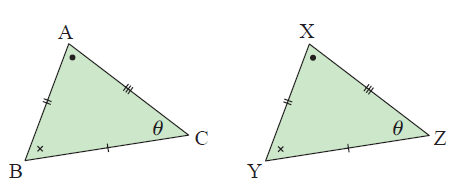
The above triangles are congruent.
We write ΔABC ≅ ΔXYZ
where ≅ reads “is congruent to”.
Test for Congruence triangles
Two triangles are congruent if one of the following is true :
All corresponding sides are equal in length (SSS)
|
SSS |
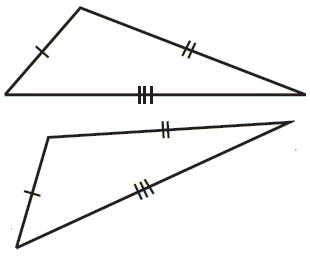 |
Two sides and the included angle are equal (SAS)
|
SAS |
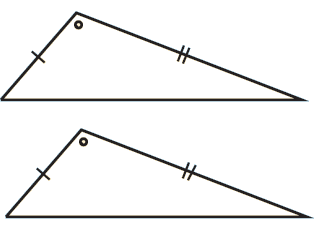 |
Two angles and a pair of corresponding sides are equal.
|
AA |
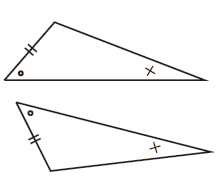 |
For right angled triangles, the hypotenuses and one pair of sides are equal (RHS)
|
RHS |
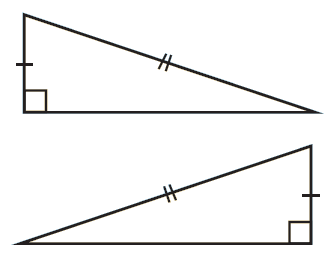 |
Are the following pairs of triangles are congruent ? If so, state the congruence relationship and give a brief reason.
Example 1 :
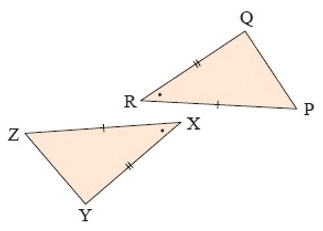
Solution :
In the given ∆PQR and ∆XYZ,
PR = ZX (Sides)
∠PRQ = ∠ZXY (Angles)
RQ = XY (Sides)
So, ∆PRQ ≅ ∆ZXY
Using SAS congruence Postulate
Example 2 :
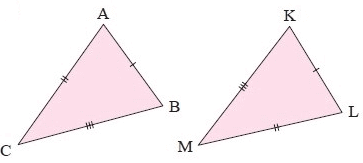
Solution :
In the given ∆ABC and ∆KLM,
AB = KL (Sides)
AC = LM (Sides)
BC = KM (Sides)
So, ∆ABC ≅ ∆KLM
Using SSS congruence Postulate
Example 3 :
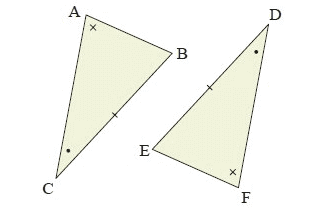
Solution :
In the given ∆ABC and ∆FED,
∠C = ∠D (Angles)
∠A = ∠F (Angles)
BC = ED (Sides)
BC and ED are corresponding sides opposite to x.
So, ∆ABC ≅ ∆FED
Using AAcorS congruence Postulate
Example 4 :
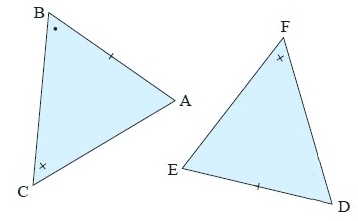
Solution :
In the given ∆ABC and ∆EDF,
∠B = ∠D (Angles)
∠C = ∠F (Angles)
AB = ED (Sides are corresponding to the angles)
So, ∆ABC ≅ ∆EFD
Using AAcorS congruence postulate
Example 5 :
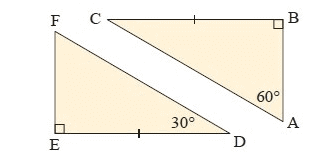
Solution :
In the given ∆ABC and ∆FED,
∠B = ∠E (Angles)
∠DEF + ∠EDF + ∠EFD = 180°
90° + 30° + ∠EFD = 180°
∠EFD = 180° - 120°
∠EFD = 60°
∠A = ∠F (Angles)
BC = ED (Sides)
which is opposite to the angles ∠A = ∠F
So, ∆ABC ≅ ∆EFD
Using AAcorS congruence Postulate
Example 6 :
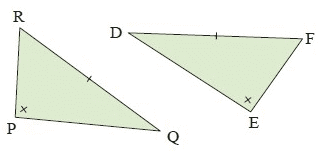
Solution :
In the given ∆PQR and ∆FED,
Here the only one pair of angles and sides are the same, so it's not congruent triangles.
So, ∆PQR ≇ ∆FED
Example 7 :
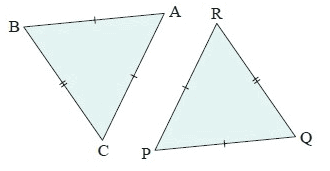
Solution :
In the given ∆ABC and ∆PQR,
AB = PR (Sides)
AC = PQ (Sides)
BC = RQ (Sides)
So, ∆ABC ≅ ∆PQR
Using SSS congruence postulate
Example 8 :
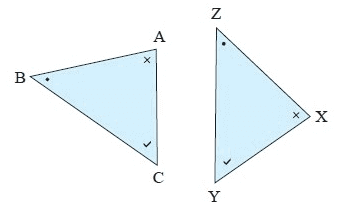
Solution :
In the given ∆ABC and ∆XYZ.
Here all the angles are equal, then triangles are also similar but not congruent triangles.
So, ∆ABC ≇ ∆XYZ
Example 9 :
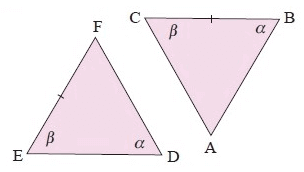
Solution :
In the given ∆ABC and ∆EFD
∠D = ∠B = α (Angles)
∠E = ∠C = β (Angles)
But EF and BC are not equal to corresponding sides.
So, ∆ABC ≇ ∆EFD
Example 10 :
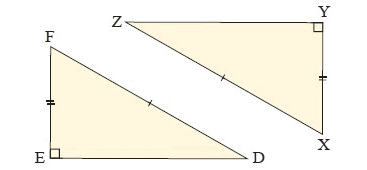
Solution :
In the given ∆DEF and ∆ZYX.
∠E = ∠Y (Right Angles)
FD = ZX (Hypotenuse sides)
EF = YX (Sides)
So, ∆DEF ≅ ∆ZYX
Using RHS congruence postulate
Subscribe to our ▶️ YouTube channel 🔴 for the latest videos, updates, and tips.
Kindly mail your feedback to v4formath@gmail.com
We always appreciate your feedback.
©All rights reserved. onlinemath4all.com
Recent Articles
-
SAT Math Practice
Dec 05, 25 04:04 AM
SAT Math Practice - Different Topics - Concept - Formulas - Example problems with step by step explanation -
10 Hard SAT Math Questions (Part - 37)
Dec 03, 25 07:02 AM
10 Hard SAT Math Questions (Part - 37) -
Factorial Problems and Solutions
Dec 02, 25 09:27 AM
Factorial Problems and Solutions

